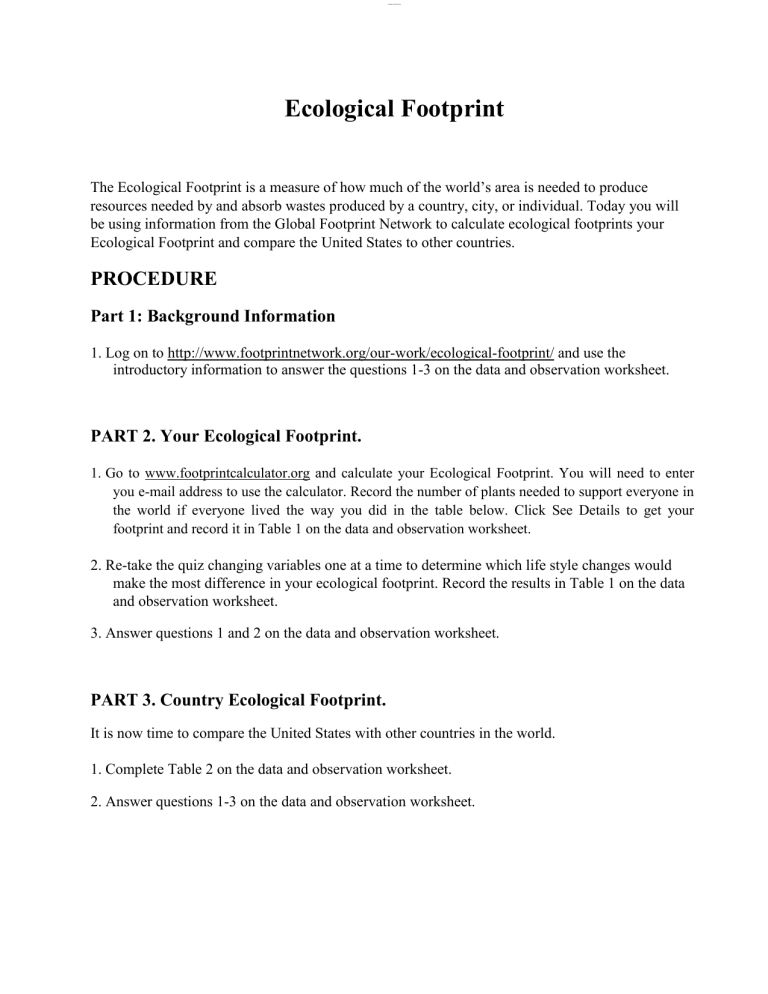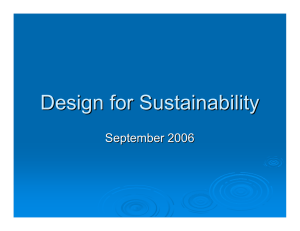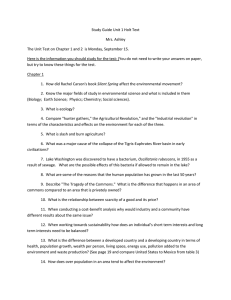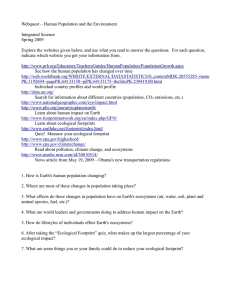
lOMoAR cPSD| 9291605 Ecological Footprint The Ecological Footprint is a measure of how much of the world’s area is needed to produce resources needed by and absorb wastes produced by a country, city, or individual. Today you will be using information from the Global Footprint Network to calculate ecological footprints your Ecological Footprint and compare the United States to other countries. PROCEDURE Part 1: Background Information 1. Log on to http://www.footprintnetwork.org/our-work/ecological-footprint/ and use the introductory information to answer the questions 1-3 on the data and observation worksheet. PART 2. Your Ecological Footprint. 1. Go to www.footprintcalculator.org and calculate your Ecological Footprint. You will need to enter you e-mail address to use the calculator. Record the number of plants needed to support everyone in the world if everyone lived the way you did in the table below. Click See Details to get your footprint and record it in Table 1 on the data and observation worksheet. 2. Re-take the quiz changing variables one at a time to determine which life style changes would make the most difference in your ecological footprint. Record the results in Table 1 on the data and observation worksheet. 3. Answer questions 1 and 2 on the data and observation worksheet. PART 3. Country Ecological Footprint. It is now time to compare the United States with other countries in the world. 1. Complete Table 2 on the data and observation worksheet. 2. Answer questions 1-3 on the data and observation worksheet. lOMoAR cPSD| 9291605 Ecological Footprint Data, Observation, and Analysis Name Part 1: Background Information 1. When, where, and by who was the idea of the Ecological Footprint developed? 2. What is an ecological deficit? 3. What is world overshoot day? When is world overshoot day? PART 2. Your Ecological Footprint. 1. Which change(s) reduced your footprint the most? Not eating animal based products, being more energy efficient, and reducing trash. 2. Which change(s) would be the easiest for you to make? How much would these changes reduce your footprint? 3. What does your carbon footprint say about your CO2 emissions per year? What percentage of your carbon footprint makes up your total footprint, and how can this be reduced? 4. Based on your “By Land Type” pie chart, how does it correlate to the different land usage? 5. How can lowering your ecological footprint help the environmental problem of sustainability? First Quiz Ecological Footprint Parameters Overall Ecological Footprint Change in Animal Based Products Change in Housing Change in Transportation Food Shelter Mobility Goods Services By Land Type Guide Built – Up Land Forest Products Crop Land Grazing Land Fishing Grounds Carbon Footprint First Test Change in Animal Based Products Change in Housing Change in Transportation lOMoAR cP PART 3. Country Ecological Footprint. Table 2. Ecological Footprint by Country. Country Ecological footprint (hectares per person) Proportion relative to world average footprint Proportion relative to world area available Afghanistan Bangladesh India Japan Mexico Nigeria Thailand United States World Average Data Source: © 2017 Global Footprint Network. National Footprint Accounts, 2017 Edition. Please contact Global Footprint Network at data@footprintnetwork.org for more information. 1. Why is the ecological footprint for people in Afghanistan, Bangladesh, and India so low? 2. Why is it so high in the United States? (Include why you think it is high even relative to other developed countries such as Japan.) 3. The population of the United States is expected to grow from roughly 317 million today to about 360 million by 2030. What impact if any do you think this growth will have on the average global ecological footprint? I think our ecological footprint date will become much smaller unless we make changes now to accommodate. As we evolve our footprint date keeps getting smaller and smaller as we consume more.





